- Tires & Tubes >
- Tires
More Related Items...
-
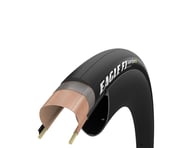 The Eagle F1 Supersport R Tubeless Road Tire ...is a no compromises race day tire designed for road races, time trials, and triathlons. An ultra-supple 150TPI casing utilizing short-ply construction absorbs impacts and vibrations for a smooth ride. The Dynamic:UHP ...Show MoreLess
The Eagle F1 Supersport R Tubeless Road Tire ...is a no compromises race day tire designed for road races, time trials, and triathlons. An ultra-supple 150TPI casing utilizing short-ply construction absorbs impacts and vibrations for a smooth ride. The Dynamic:UHP ...Show MoreLess -
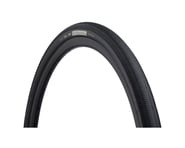 Rampart tires were built to provide adventurous road ...cyclists with a dependable option that more than handles it's own on all matter of paved surfaces through a durable casing design and mindful siping pattern.Show MoreLess
Rampart tires were built to provide adventurous road ...cyclists with a dependable option that more than handles it's own on all matter of paved surfaces through a durable casing design and mindful siping pattern.Show MoreLess -
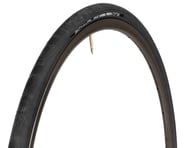 The Schwalbe One Tubeless Road Tire features high-level ...technologies, making it fast, reliable, and agile. The award-winning construction with additional RaceGuard protection is proven to be fast in tubeless use and, at the same time, provides a high level of ...Show MoreLess
The Schwalbe One Tubeless Road Tire features high-level ...technologies, making it fast, reliable, and agile. The award-winning construction with additional RaceGuard protection is proven to be fast in tubeless use and, at the same time, provides a high level of ...Show MoreLess -
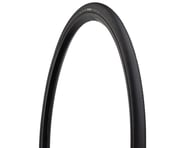 The Teravail Telegraph is a high-volume performance tubeless ...road tire that offers comfort, grip, and excellent rolling speeds all wrapped up in a 120 TPI casing. Featuring a slick center tread for carrying speed and a textured transition area for ...Show MoreLess
The Teravail Telegraph is a high-volume performance tubeless ...road tire that offers comfort, grip, and excellent rolling speeds all wrapped up in a 120 TPI casing. Featuring a slick center tread for carrying speed and a textured transition area for ...Show MoreLess -
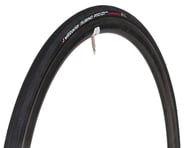 The Vittoria Rubino Pro G2.0 TLR Tubeless Road ...Tire was designed for intensive training, but is equally suited to racing events as well. The Rubino Pro builds on the standard Rubino platform, utilizing the same exclusive 3C Graphene compound structure, ...Show MoreLess
The Vittoria Rubino Pro G2.0 TLR Tubeless Road ...Tire was designed for intensive training, but is equally suited to racing events as well. The Rubino Pro builds on the standard Rubino platform, utilizing the same exclusive 3C Graphene compound structure, ...Show MoreLess
Related Categories
Bike Tires FAQ:
Clinchers are the most common type of bike tire. They feature a design where the tire bead "clinches" to the rim of the wheel when inflated. This is different from tubular tires, which are glued to the rim with rubber cement. Three common types of clinchers are folding tires, wire bead tires, and tubeless tires (not to be confused with tubular).
Folding bike tires are an improvement over wire bead tires in that they tend to be lighter and more performance-oriented. Folding tires utilize a light-weight flexible bead which can be folded making the tire easier to ship. Wire Bead tires on the other hand are heavier and more difficult to ship (since the tire must be packaged in its full size). Additionally, wire bead tires are cheaper to manufacture. Higher-end road and mountain bikes usually use folding tires (or tubeless tires, which are a type of folding tire). Less expensive city bikes, kids bikes, BMX bikes, and electric bikes tend to use wire bead tires.
Tubeless bike tire systems create a sealed chamber between the rim and the tire that does not require an inner tube. Requiring tubeless-specific tires and rims, these systems utilize tight tolerances to ensure a secure fit. To prevent flat tires, tubeless setups require a liquid sealant that is formulated to stanch small punctures and seal leaks. Tubeless tires are very common for mountain and gravel bikes and popularity for road riders has also grown recently especially among competitive racers. Check out our article on tubeless road bike tires.
Bike tire naming can be confusing. The safest bet is always to replace your tire with another that has the same size markings written on the sidewall. Tire sizes usually consist of two numbers with the letter X in the middle. The first number refers to the diameter of the wheel's rim and the second number refers to the width of the tire. Some examples of common tire sizes include: 700c x 28mm (road bikes), 29" x 2.4" (modern mountain bikes), and 26" x 2.1" (older mountain bikes). For more information on this topic, check out our guide on How To Choose The Right Size Bike Tire.
700c bikes tires are the most common size of tire for road and gravel bikes. 700c tires have a measured bead diameter of 622mm and can be found in a variety of widths. The most common road bike sizes are 700c x 25mm and 700c x 28mm. The most common gravel bike sizes are 700c x 35mm and 700c x 40mm. Check out this article to learn more about tire sizing.
As bike tires age, they will become thinner and more prone to flats. Look for signs of wear such as a flattened top, reduced tread, visible casing threads, or cuts. Some tires utilize a tread wear indicator (TWI) a small indentation in the tire that shows how much tread can be safely worn away.
TPI stands for Threads Per Inch and is a measurement of the number of threads in the casing of a tire. Tires with higher thread counts tend to be more supple providing a smoother and faster ride. However, higher TPI tires can also be more fragile and prone to punctures.
While some of the tools may differ depending on the tire, you will usually need a pair of tire levers, a bike pump, a spare inner tube, and a good YouTube tutorial.
